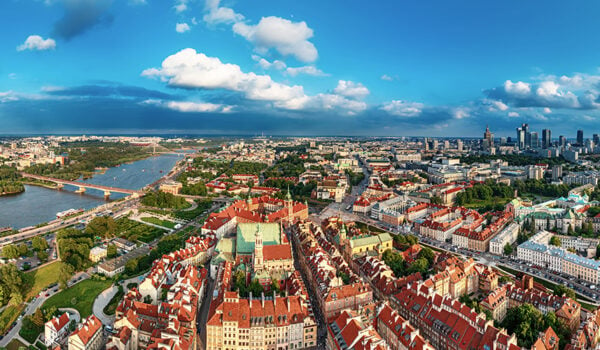Research in Svalbard shows that atmospheric deposition of PFAS in Arctic areas can be up to 71 times higher during summertime compared to winter.
Many people may miss the sun and warmth these days in the northern winter darkness. But for one type of pollution in the Arctic, as little sun as possible is actually an advantage.
In a research paper recently published in the scientific journal Environmental Science & Technology, NILU researcher William Hartz shows that sunlight affects how many harmful PFAS chemicals end up in the Arctic.
The sun changes PFAS substances
“After the PFAS substances have been released into the atmosphere, they are transported through the air. At some point, the substances are transformed into another type of PFAS. These are the PFAS that are deposited,” Dr. Hartz explains.
Deposition means that the PFAS end up in the environment on the ground during precipitation such as rain and snow.
Hartz says that this crucial transformation, which changes so-called PFAS precursors to the more stable PFAS he has observed in the Arctic snow, requires sunlight to get started.
“In winter, with complete or partial darkness, we saw little deposition of PFAS in the snow.”
Numerous PFAS
William Hartz has previously studied PFAS deposition on a glacier in Svalbard from an ice core. The ice samples from the ice core show that numerous PFAS were present in the ice originally because of emissions from various fluorochemical industries elsewhere on Earth, which were transported to the Arctic through the air.
“In our most recent study, we have collected samples of surface snow on a remote ice cap on Svalbard from January to August and measured PFAS in them. We found that the atmospheric deposition of some PFAS was up to 71 times higher in the summer, during 24-hour daylight, compared to the winter,” says Hartz.
This study has been broader than many previous studies. The researchers have analysed for as many as 45 different PFAS chemicals in the Arctic. They found 36 different PFAS compounds in Svalbard. Many of them were discovered in remote areas, far away from local emission sources.
“PFAS pollution in the Arctic is chemically diverse and geographically widespread, even in remote areas.” says the researcher.
Bad news for Arctic life
The massive increase in deposition of PFAS from the atmosphere during snowfall occurs at the same time as the sun returns to the Arctic regions in spring. This is not fortunate for the vulnerable life in the Arctic.
“The increase occurs at the same time as many of the organisms in the Arctic are ‘waking up’ after the polar night. Plankton in the sea-ice ecosystem wake up when the sun returns to the Arctic. They live and multiply at the same time as PFAS deposition increases.” Hartz points out.
He believes it is likely that the chemicals are absorbed by plankton. These are eaten by fish, which in turn are eaten by seals, which then become food for larger marine mammals such as orcas and polar bears. Fish and mammals from the Arctic can also end up as food for humans.
“PFAS enter the system early and accumulate further in the food web.”
Hartz also refers to a study in which high levels of a PFAS called PFOS (perfluorooctanesulfonic acid) have been found in the blood of polar bears. The amount (a few hundred nanograms of PFOS per gram of blood) is equivalent to that of people living near PFAS-producing factories in China.
“It is fascinating that the PFOS levels of polar bears, which live in very remote areas of the Arctic, are on a par with some of the most pollution-exposed people in the world,” he says.

Norway wants PFAS ban
Hartz believes that his findings might serve as a good argument for regulating PFAS atmospheric emissions. Norway and a number of other countries have advocated for a widespread ban on PFAS in the EU.
“If we wish to reduce PFAS deposition, there is nothing we can do that will prevent the sun from initiating these processes. The only thing we can do is to reduce how much PFAS we release into the atmosphere to begin with.”
The researcher explains that some PFAS precursors have a short lifespan in the atmosphere before they change to other PFAS that are deposited in the snow. If we banned these today, he believes we might be able to see results in as little as a year for some specific PFAS compounds he has studied.
“In the short term, it might have a major impact on the deposition of the two PFAS called PFOA (perfluorooctanoic acid) and PFOS if we manage to limit or eliminate emissions of their precursors.”
PFAS pollution also affects our drinking water
Hartz points out that the deposition of PFAS in precipitation is not a problem that is reserved for Arctic areas.
In Norway almost 90 percent of the drinking water comes from surface waters such as rivers and lakes. These are filled up by precipitation that also carries PFAS compounds from the atmosphere.
“In this sense, Norway has a strong motivation to ensure that what falls from the sky in the precipitation is clean. When we find these substances in remote places in Svalbard, you can be sure that they are also found here,” says the researcher.


